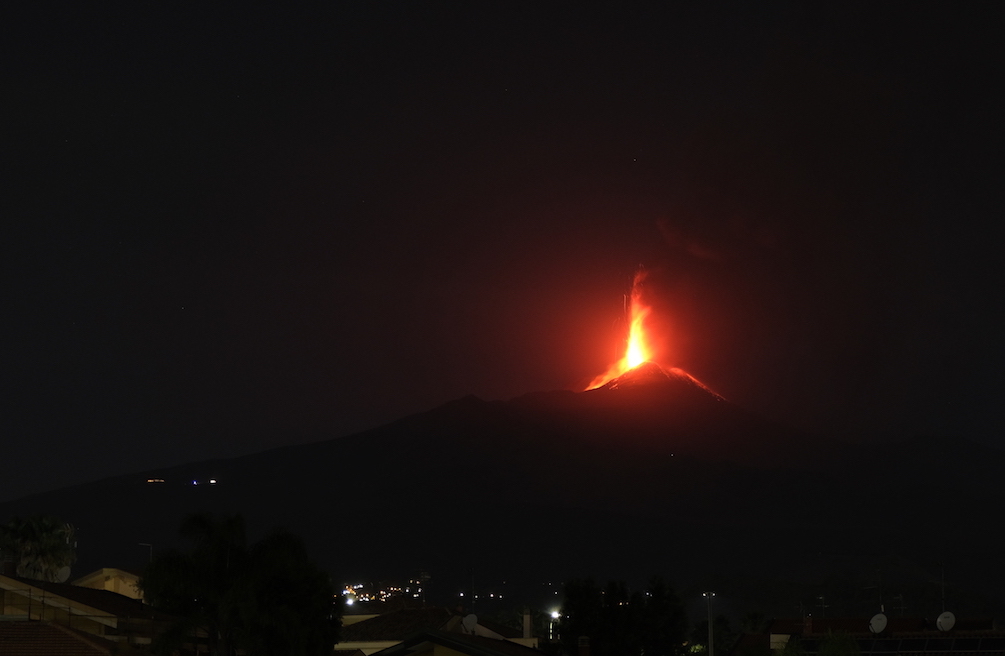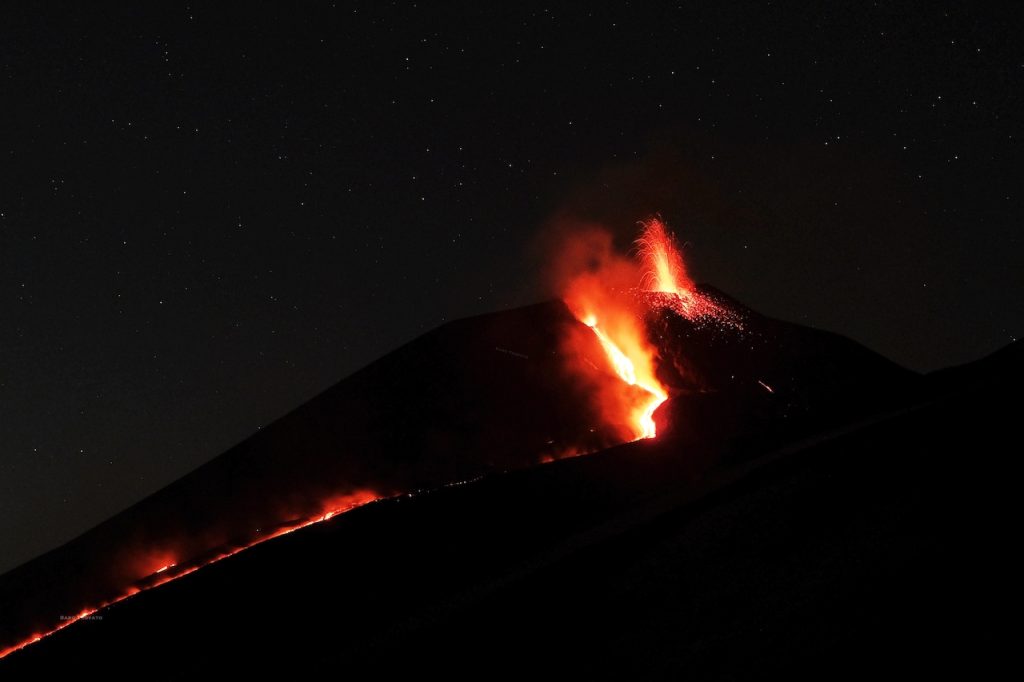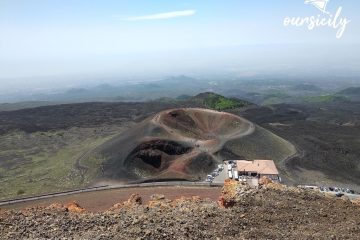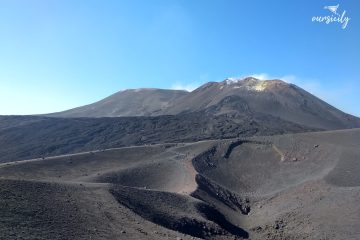Frequently asked questions about Mt. Etna
Mount Etna is the subject of widespread interest, and at the same time erroneous and misleading information.

When will Etna erupt again?
This is one of the questions most difficult to answer. Many flank eruptions at Etna are actually preceded by eruptive activity at the summit craters. Volcanoes usually do not behave in a strictly regular manner in terms of their eruption frequencies, and they may change the behavior manifested for a certain period. There is no way to recognize the precise time of the next eruption of Mount Etna. The sites most likely to be affected by a new flank eruption lie in the same general areas: the upper southern and the northeastern flanks.
Can the next flank eruption be forecast or predicted?
In the short term, an identification of an imminent eruption and its location will be possible, based mostly on premonitory seismicity and ground deformation. An intrusion of magma into the flank of Etna will be detected by the seismic and geodetic network of INGV.
There is no means to say with certainty when the next eruption will take place, and how long it will last. Summit activity generally marks the recharging of the central conduit system of the volcano, after its draining during a “normal” (lateral) flank eruption. This can occur if the magma does not find pathways leading directly from the central conduit system into the flanks of the volcano, that is, the volcano is stable. If, on the other hand, there are open fractures in the walls of the central conduit system, which lead into the flanks, then the magma might drain into these fractures without even arriving at the summit craters.
Can lava flows at Etna be diverted?
Some possibilites to control and influence the advance of a lava flow do exist, they are limited.
The principal attempt of lava diversion is the 1669’s. After this the 1983, 1991 and the eruption of 2001 on the southern flank, earth barriers were erected and channels were excavated.
How many people have been killed by eruptions of Etna?
Etna is definitely not a killer volcano. Very few people have been killed by eruptions of Etna.
In recorded history there have been 77 deaths that can be directly attributed to eruptions of Etna. This low number is mostly due to the fact that Etna’s eruptions are rarely violently explosive, and lava flows move slowly allowing people to leave long before the lava front arrives at their homes. All cases because humans were in areas where they should not have been in that moment, like the nine tourists who were killed in September 1979 near Bocca Nuova by a vent-clearing phreatic explosion.
Is it safe to climb alone the summit of Etna?
The answer is quite simple: no, it is not safe to go to the summit area.
Etna is a surprisingly large mountain where people can easily lose orientation. Etna may be shrouded in dense clouds, and often these produce downpours and thunderstorms. Since 1999, three people were killed by lightning in the higher areas of Etna.
Never go to the summit alone, never go unless weather conditions are extremely stable, and never go if there is a visible increase in the eruptive activity at one or more of the summit craters.
How fast do Etna’s lavas move?
The velocity depends on several factors, such as:
the distance from the eruptive vent, the effusion rate, the steepness of the slope on which the lava is flowing, the temperature of the lava, the crystal content of the lava, the presence or absence of lava flow tubes. Near its source the lava generally flows at a speed of up to several meters per second but rapidly slows as it extends further.


